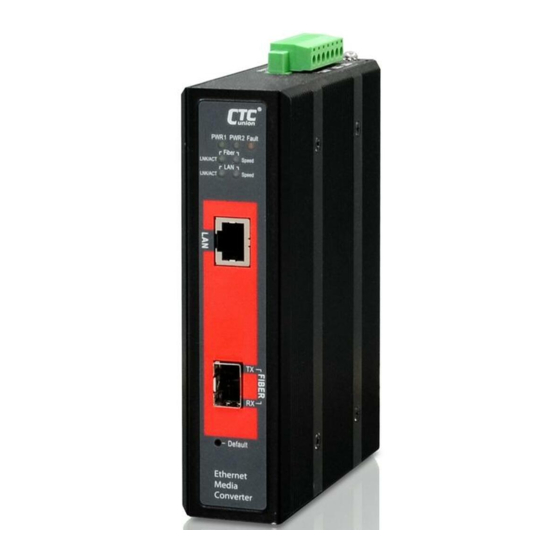
CTC Union IMC-1000M User Manual
Industrial gigabit ethernet oam/ip web smart media converter
Hide thumbs
Also See for IMC-1000M:
- Quick installation manual (2 pages) ,
- Quick installation manual (2 pages) ,
- Quick installation manual (14 pages)













Need help?
Do you have a question about the IMC-1000M and is the answer not in the manual?
Questions and answers